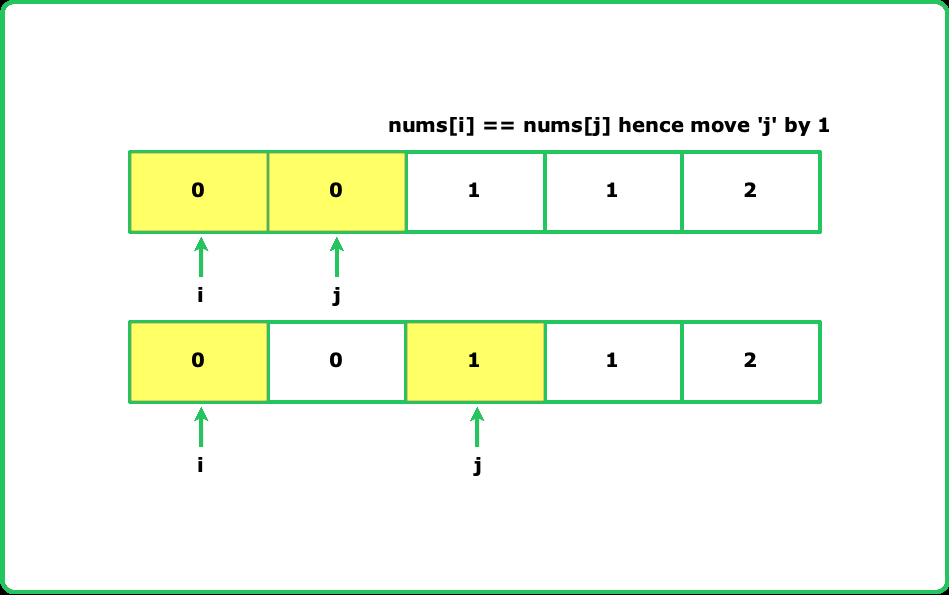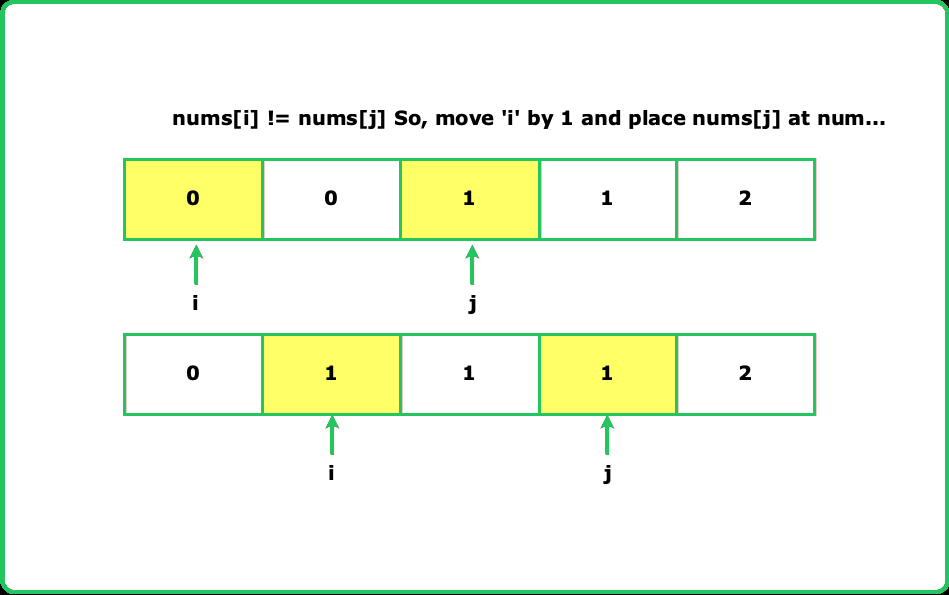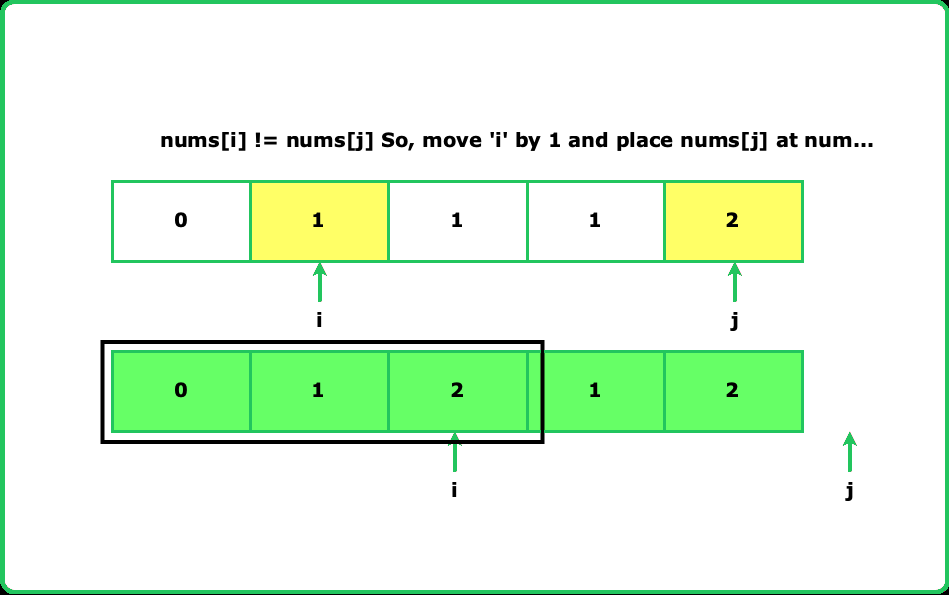1234567891011121314151617181920212223242526272829303132333435363738394041424344454647484950515253545556
#include<bits/stdc++.h>
using namespace std;
class Solution {
public:
// Function to remove duplicates from the array
int removeDuplicates(vector<int>& nums) {
/* Set data structure to store unique
elements maintaining the sorted order */
set<int> s;
// Add all elements from array to the set
for (int val : nums) {
s.insert(val);
}
// Get the number of unique elements
int k = s.size();
int j = 0;
// Copy unique elements from set to array
for (int val : s) {
nums[j++] = val;
}
// Return the number of unique elements
return k;
}
};
// Helper function to print first n elements of the array
void printArray(vector<int> &nums, int n) {
for(int i=0; i < n; i++) {
cout << nums[i] << " ";
}
cout << endl;
}
int main() {
vector<int> nums = {1, 1, 2, 2, 2, 3, 3};
cout << "Original Array: ";
printArray(nums, nums.size());
// Create an instance of the Solution class
Solution sol;
// Function call to remove duplicates from array
int k = sol.removeDuplicates(nums);
cout << "Array after removing the duplicates: ";
printArray(nums, k);
return 0;
}
1234567891011121314151617181920212223242526272829303132333435363738394041424344454647484950515253
import java.util.*;
class Solution {
// Function to remove duplicates from the array
public int removeDuplicates(int[] nums) {
// TreeSet to store unique elements in sorted order
Set<Integer> s = new TreeSet<>();
// Add all elements from array to the set
for (int val : nums) {
s.add(val);
}
// Get the number of unique elements
int k = s.size();
int j = 0;
// Copy unique elements from set to array
for (int val : s) {
nums[j++] = val;
}
// Return the number of unique elements
return k;
}
}
class Main {
// Helper function to print first n elements of the array
public static void printArray(int[] nums, int n) {
for (int i = 0; i < n; i++) {
System.out.print(nums[i] + " ");
}
System.out.println();
}
public static void main(String[] args) {
int[] nums = {1, 1, 2, 2, 2, 3, 3};
System.out.print("Original Array: ");
printArray(nums, nums.length);
// Create an instance of the Solution class
Solution sol = new Solution();
// Function call to remove duplicates from array
int k = sol.removeDuplicates(nums);
System.out.print("Array after removing the duplicates: ");
printArray(nums, k);
}
}
1234567891011121314151617181920212223242526272829303132333435363738394041
class Solution:
# Function to remove duplicates from the array
def removeDuplicates(self, nums):
# Set data structure to store unique elements
s = set()
# Add all elements from array to the set
for val in nums:
s.add(val)
# Get the sorted list of unique elements
sorted_unique = sorted(s)
# Copy unique elements from sorted list to array
for j in range(len(sorted_unique)):
nums[j] = sorted_unique[j]
# Return the number of unique elements
return len(sorted_unique)
# Helper function to print first n elements of the array
def printArray(nums, n):
for i in range(n):
print(nums[i], end=" ")
print()
if __name__ == "__main__":
nums = [1, 1, 2, 2, 2, 3, 3]
print("Original Array: ", end="")
printArray(nums, len(nums))
# Create an instance of the Solution class
sol = Solution()
# Function call to remove duplicates from array
k = sol.removeDuplicates(nums)
print("Array after removing the duplicates: ", end="")
printArray(nums, k)
123456789101112131415161718192021222324252627282930313233343536373839404142434445464748
class Solution {
// Function to remove duplicates from the array
removeDuplicates(nums) {
// Set data structure to store unique elements
let s = new Set();
// Add all elements from array to the set
for (let val of nums) {
s.add(val);
}
// Get the number of unique elements
let k = s.size;
let j = 0;
// Copy unique elements from set to array
for (let val of s) {
nums[j++] = val;
}
// Return the number of unique elements
return k;
}
}
// Helper function to print first n elements of the array
function printArray(nums, n) {
for (let i = 0; i < n; i++) {
process.stdout.write(nums[i] + " ");
}
console.log();
}
// Example usage
let nums = [1, 1, 2, 2, 2, 3, 3];
console.log("Original Array: ");
printArray(nums, nums.length);
// Create an instance of the Solution class
let sol = new Solution();
// Function call to remove duplicates from array
let k = sol.removeDuplicates(nums);
console.log("Array after removing the duplicates: ");
printArray(nums, k);



